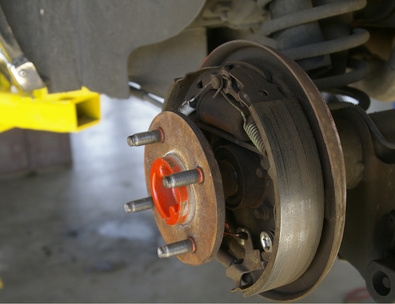
Bleeding the rear brakes on your 1999 Chevrolet S-10 should be a simple task. There are a few factors that can cause the brakes not to bleed. Diagnosing these factors is a more challenging task than the bleeding project. Repairing the problem could take up to three hours, depending on what your diagnosis reveals. All of the materials needed perform this operation are available at an auto parts store.
Lift the rear of the vehicle. Set jack stands about 1-foot in from the end of the axles, underneath the axle housing. Leave yourself room to access the back of the drum brakes.
Spray rust penetrant on the brake bleeder screw. Let stand for three minutes.
Open the brake bleeder screw with an open end wrench. If the bleeder screw resists when you are applying more than 15 pounds of pressure, stop and respray the bleeder. Let it stand for about 10 minutes longer.
Close the bleeder screw once it is freely turning. Ask your assistant to gently pump up the brake pedal in the truck. If the brake pedal will not pump up, tell your assistant to just let the pedal come up on its own, and remove his/her foot from the pedal.
Open the bleeder screw and ask your assistant to slowly depress the brake pedal all the way to the floor. Close the bleeder screw when the pedal is all the way down. Repeat this process two times. If no fluid comes out of the bleeder screw, remove the bleeder screw completely.
Replace the bleeder screw and close it. Attempt to have the brakes pumped up again. Open the screw and instruct your assistant to push the bleeder screw to the floor. If no fluid comes out, you will now need to go farther in your diagnosis. A brake system that fails to bleed can be the fault of a bad wheel cylinder, a vacuum leak, or a bad master cylinder. Start by replacing the wheel cylinder, which is a simple two bolt process once you dismantle the rear brake shoes and hardware.